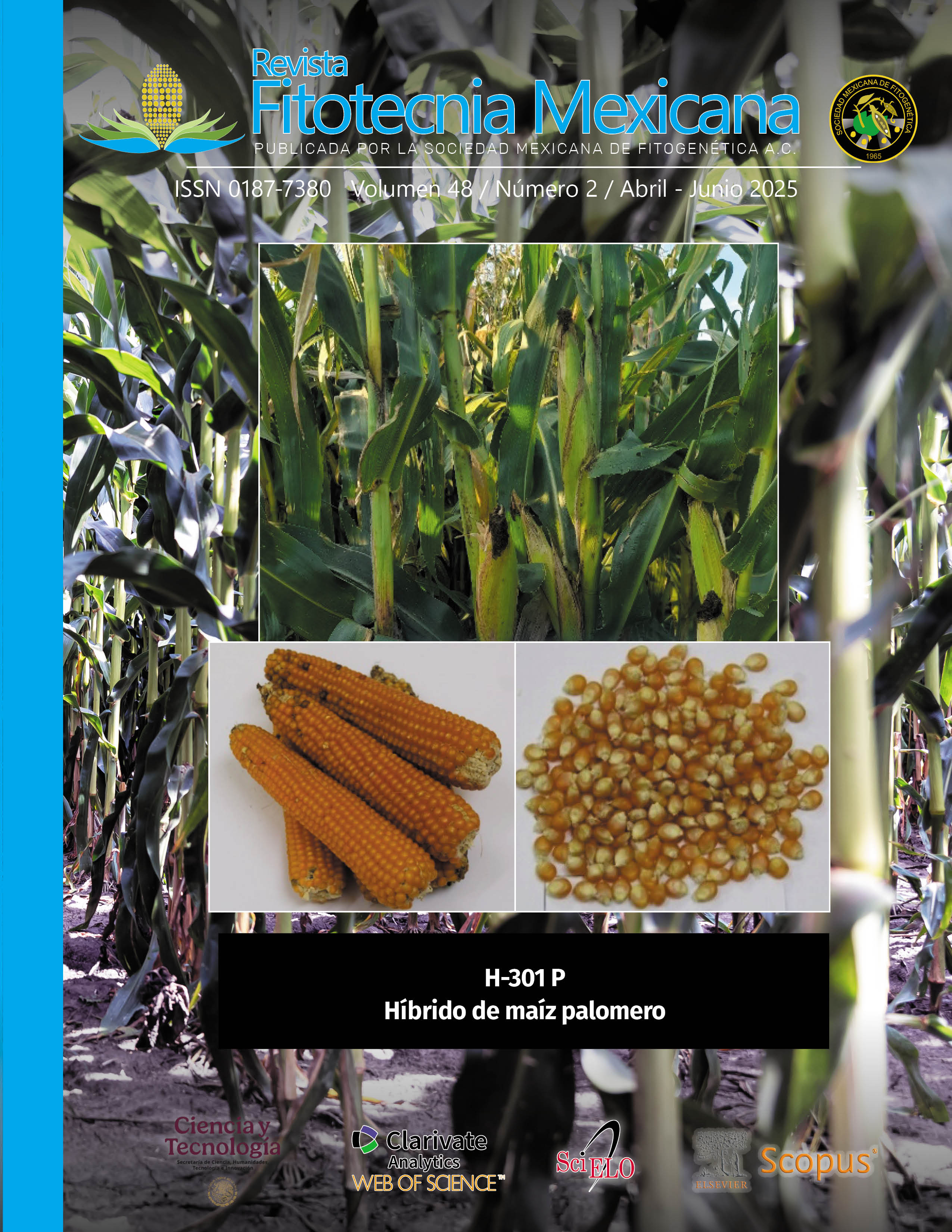SELECTION OF NATIVE MAIZE FAMILIES FOR YELLOW GRAIN COLOR: AGRONOMIC TRAITS AND CAROTENOIDS
Main Article Content
Abstract
Among the wide diversity of maize, the yellow-orange grain has been recognized as a source of carotenoids, including provitamin A, which are beneficial to human health; however, for the improvement of concentration, quantification in each progeny is a limiting factor; therefore, visual selection for yellow grain color was proposed as an indirect method. To determine this effect, agronomic characteristics and carotenoid concentration were evaluated in two generations of full-sib families (FSF) in yellow maize native to Coahuila, Mexico. The study was conducted with 18 accessions of five racial groups (Ratón, Tuxpeño, Tuxpeño Norteño, Cónico Norteño and Celaya), and the agronomic evaluation was conducted in three locations of Southeastern region of Coahuila: Buenavista, Saltillo; Galeana, Nuevo Leon; and General Cepeda. With the eight outstanding FSF for grain color, the content of carotenoid and provitamin A was determined. Selection significantly affected (P ≤ 0.05) yield (between -0.30 and 0.90 t ha-1), flowering (between -8.9 and 6.5 days) and plant height (between -26.2 and 30.3 cm). The maximum carotenoid concentrations in μg g-1 were: 1.58 lutein (LUT), 2.02 zeaxanthin (ZEAX), 2.28 cryptoxanthin (CRYPT), 0.56 13-cis β-carotene (13βC), 1.45 β-carotene (βCAR), 0.97 9-cis β-carotene (9βC), 4.13 provitamin A (PROA) and 10.19 total carotenoids (TOTAL). Significant differences (P ≤ 0.05) were observed between families for carotenoid concentrations; the TOTAL was modified in each accession between -0.46 and 1.94 μg g-1, PROA between -0.38 and 0.85 μg g-1 and CRYPT between 0.24 and 0.91 μg g-1. The visual selection of yellow grain color allowed to modify the provitamin A content in native maize; however, this increase was reduced considering human nutritional needs.

